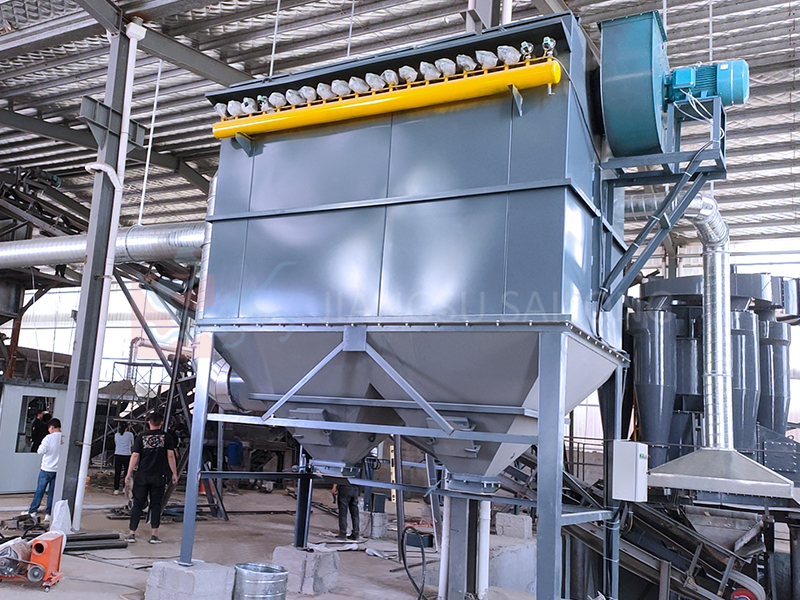Dust Collectors are essential devices used to remove dust and other particulate matter from the air. Here's a detailed look at how they work:
1. Inlet and Airflow
Dust collectors typically have an inlet through which the dusty air enters. A fan or blower is usually responsible for creating a negative pressure or suction force that draws the air into the collector. The dusty air is then forced to move through the internal components of the dust collector. The speed and volume of the airflow are carefully designed to ensure efficient particle capture. For example, in an industrial setting where there is a large amount of dust generated from a machining process, the fan needs to have sufficient power to handle the high - volume, high - density dust - laden air.
2. Filtration System
The heart of a dust collector's operation is its filtration system. There are several types of filters used:
- Fabric Filters: These are one of the most common types. They consist of a woven or non - woven fabric material. As the dusty air passes through the fabric, the dust particles are trapped on the surface or within the pores of the fabric. The fabric filters can have different pore sizes depending on the size of the particles to be captured. For instance, in a woodworking shop, a fabric filter with a relatively small pore size can effectively capture fine sawdust particles.
- Cartridge Filters: These are cylindrical - shaped filters. They offer a large surface area for filtration in a relatively compact space. The filter media in cartridge filters can be made of materials such as pleated paper, synthetic fibers, or a combination of both. The pleated design increases the effective filtration area, allowing for more efficient dust removal.
- Cyclonic Separation: In some dust collectors, a cyclonic separation mechanism is used before the air reaches the filters. The dusty air is spun at a high speed inside a conical or cylindrical chamber. Due to the centrifugal force, the larger and heavier dust particles are thrown to the outer wall of the chamber and then fall into a collection bin at the bottom. This pre - filtration step helps to reduce the load on the main filters and can increase their lifespan.
3. Cleaning Mechanism
Over time, the filters in a dust collector become clogged with dust, which reduces their efficiency. To address this, most dust collectors have a cleaning mechanism.
- Reverse - Air Pulse Cleaning: In systems with fabric or cartridge filters, a reverse - air pulse is often used. Compressed air is periodically released in short bursts in the opposite direction of the normal airflow. This sudden reversal of air pressure causes the dust cake that has formed on the filter to be dislodged and fall into a collection hopper below. The frequency of the reverse - air pulse can be adjusted depending on the dust load and the type of filter.
- Mechanical Shaking: In some older or simpler Dust Collector Designs, mechanical shaking is used to clean the filters. A motor - driven shaking mechanism vibrates the filter elements to loosen the accumulated dust. However, this method is generally less efficient than reverse - air pulse cleaning and may cause more wear and tear on the filters.
4. Collection and Disposal of Dust
The dust that is removed from the air is collected in a bin or hopper at the bottom of the dust collector. The collection bin is designed to be easily accessible for emptying. In industrial applications, the dust may need to be disposed of according to environmental regulations. For example, if the dust contains hazardous materials such as heavy metals or asbestos, it must be treated and disposed of in a specialized facility. In less hazardous situations, the dust can often be recycled or disposed of as general waste.

5. Outlet and Clean Air Discharge
After passing through the filtration and cleaning processes, the clean air is discharged from the dust collector through an outlet. The quality of the clean air is monitored in some advanced dust collectors to ensure that it meets the required air quality standards. This clean air can then be recirculated back into the work environment or released into the atmosphere without causing harm to human health or the environment.
This website uses cookies to ensure you get the best experience on our website.
Comment
(0)